3.2 Sarcomere, Contractile Cycle
1/66
There's no tags or description
Looks like no tags are added yet.
Name | Mastery | Learn | Test | Matching | Spaced |
|---|
No study sessions yet.
67 Terms

What are the significant bands on the Sarcomere? (2)
A band, I band
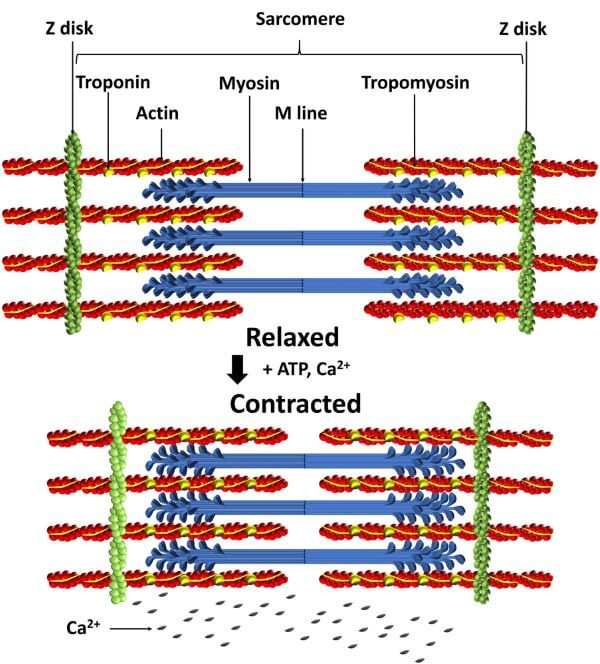
What does the A band contain?
myosin
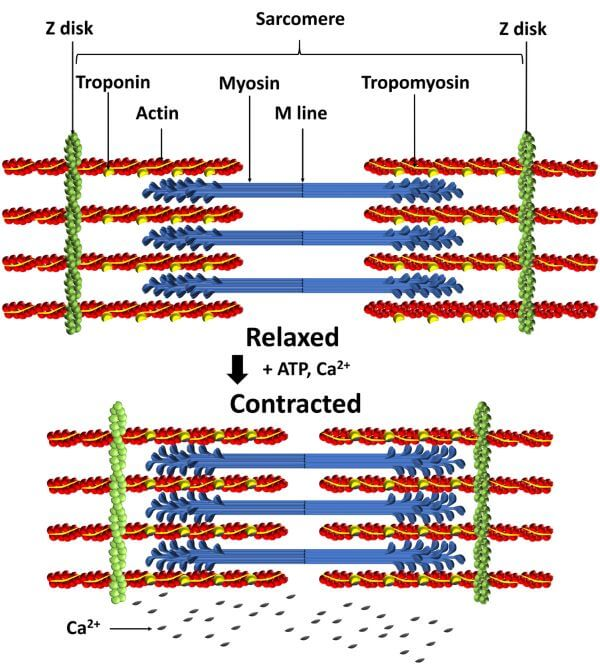
What does the I band contain?
actin

What are the type of filaments the A band contains?
thick filaments
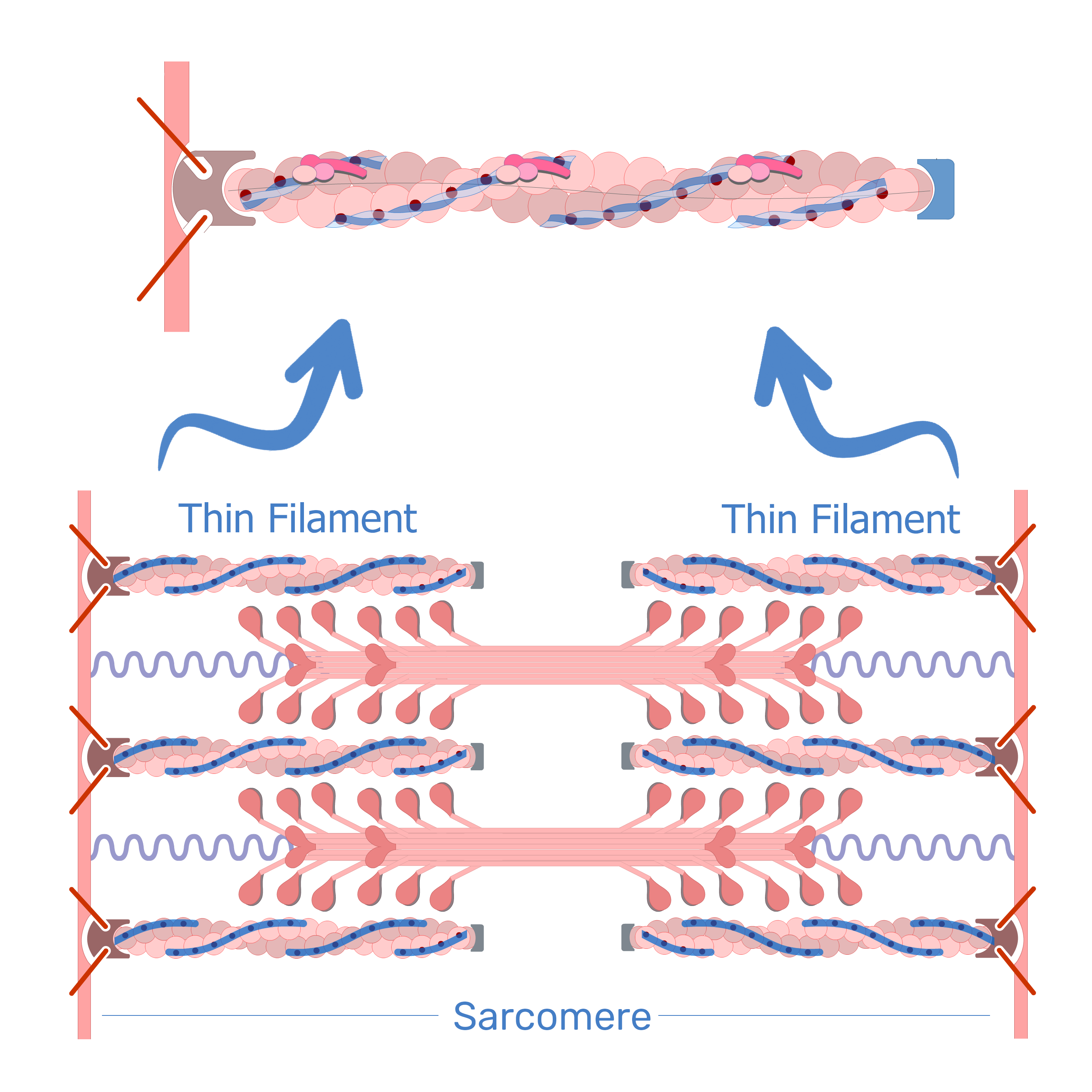
What are the type of filaments the I band contains?
thin filaments
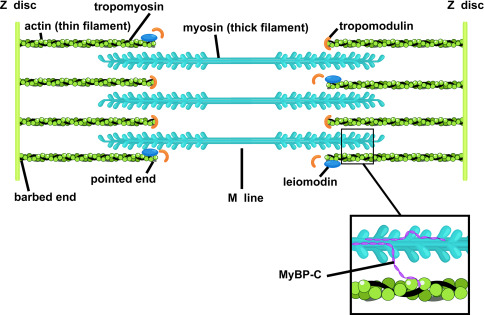
What do thin filaments attatch to?
z discs (or z line)
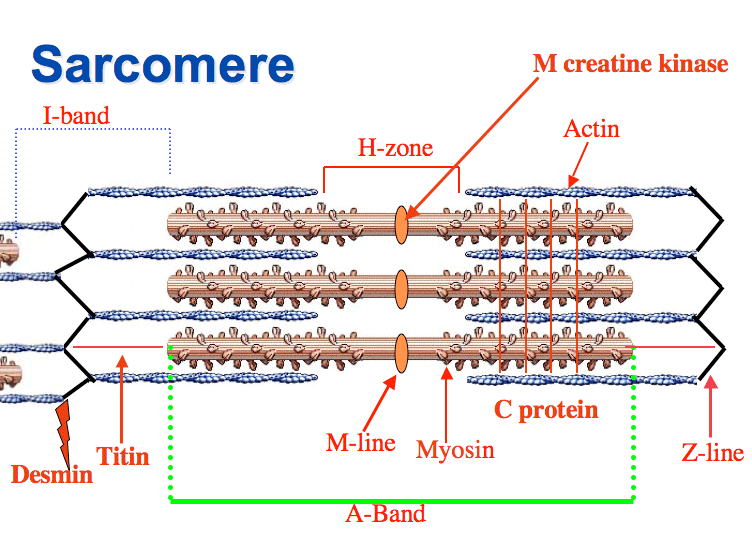
What’s the H zone/band?
region within A band where there are no thin filaments (only thick)
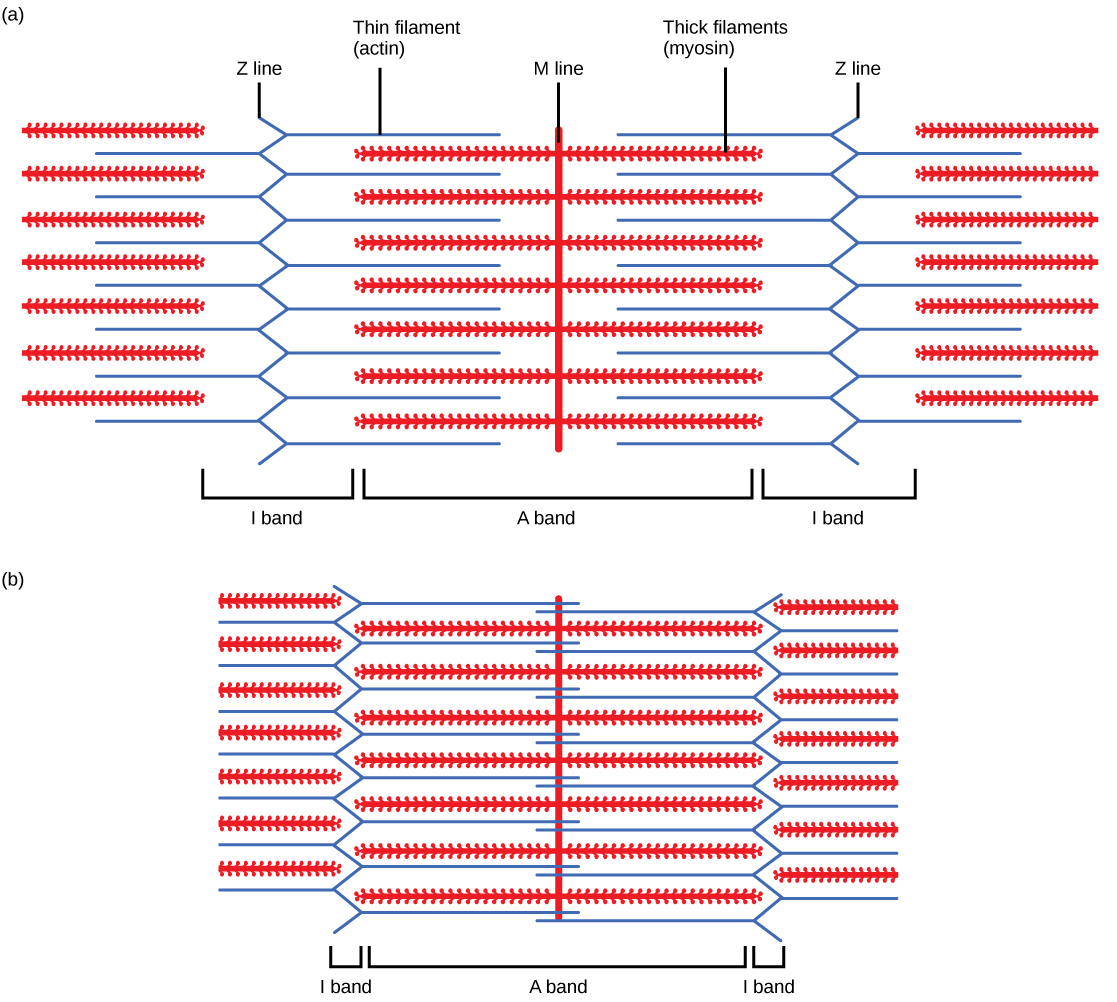
What are thick filaments tied together by?
M line
In a contracted muscle, which bands are “shrinking”? (2)
I, H bands
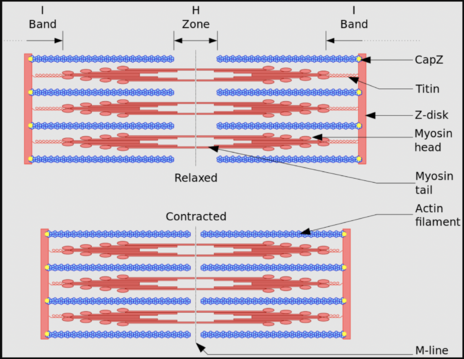
They’re not really shrinking though, what’s actually happening?
bands are overlapping
What is “Frank”
the region of bands when they overlap (dark region)
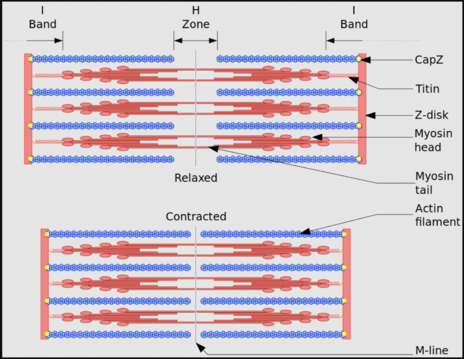
When muscle is contracted, does Frank increase or decrease?
increase (bc more overlapping; frank = overlap)

When muscle is contracted, do A bands increase, decrease, or stay the same?
stay the same
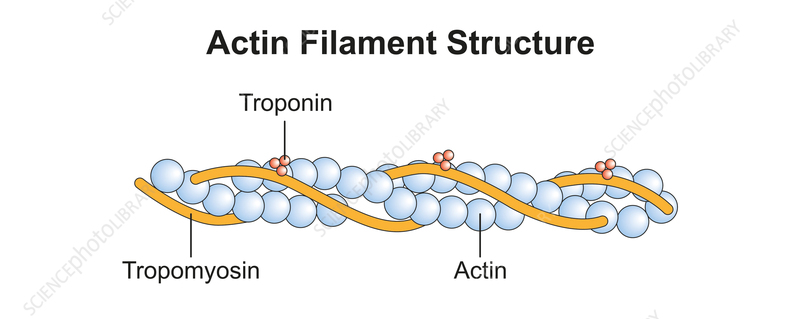
What’s the composition of Thin Filaments? (discuss strand only)
2 strands of actin intertwined
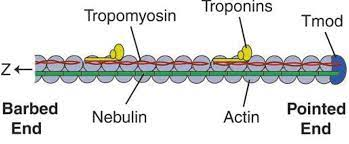
What’s the line called that runs through the actin proteins?
nebulin
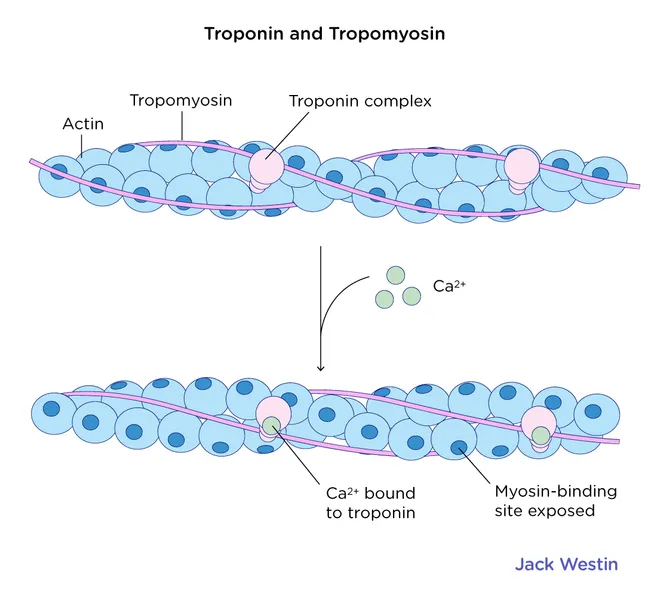
On the outside of the actin strands, there’s a ribbon of a protein called ____
tropomyosin
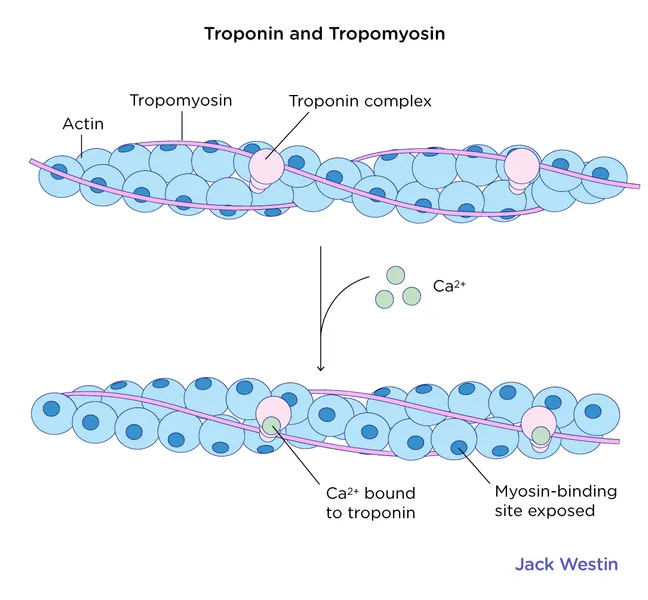
Anchoring the tropomyosin to the actin, there’s another protein called _____
troponin
When Ca2+ ions enter myofibril and are in the sarcomere, it binds to what protein?
troponin

What occurs once Ca2+ is bound to troponin?
tropomyosin shifts exposing actin
What components does myosin contain? (thick filaments)
motor components
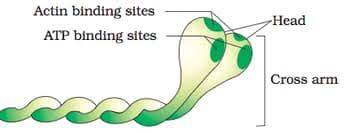
What are 3 structural features of myosin?
rigid tail, neck, heads (2)
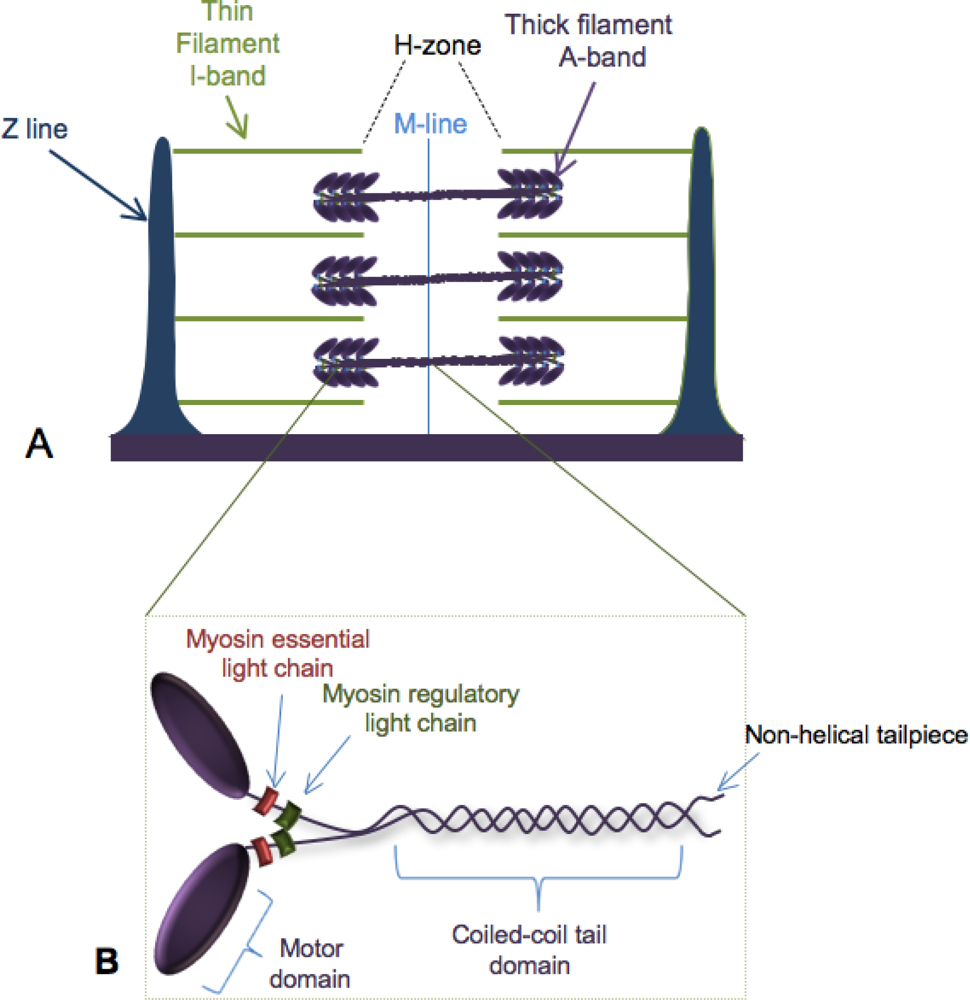
Myosins “tails” combines together to form what?
M-line

The heads of myosin point out in all directions, but in a ____ way?
unidirectional

On the myosin head, there are two regions. Name the functions/regions
actin binding region
ATPase region
What’s the function of the ATPase region? (turns what into what and why)
turns ATP into ADP which releases energy
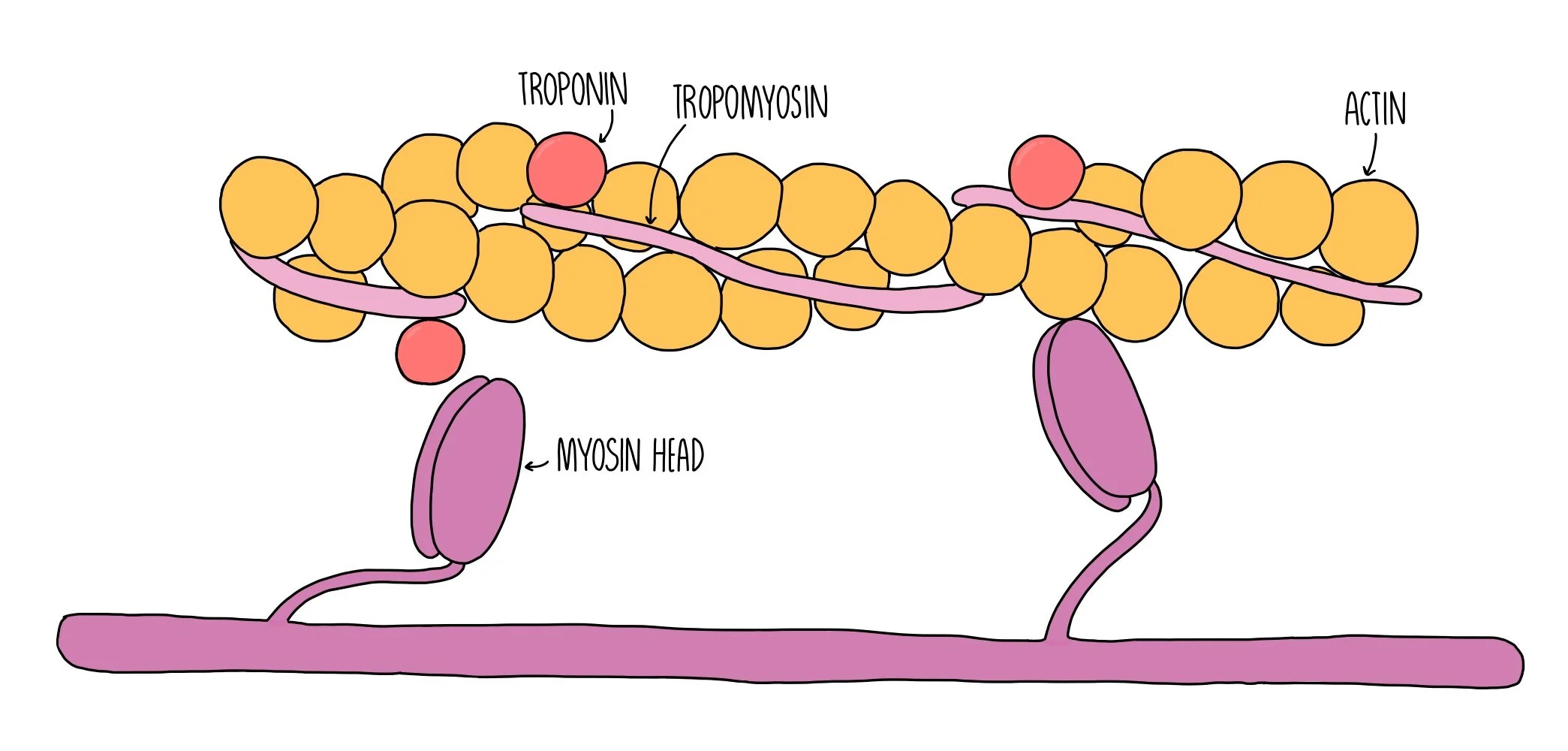
What are two ways the myosin head can be positioned?
bent back or extended
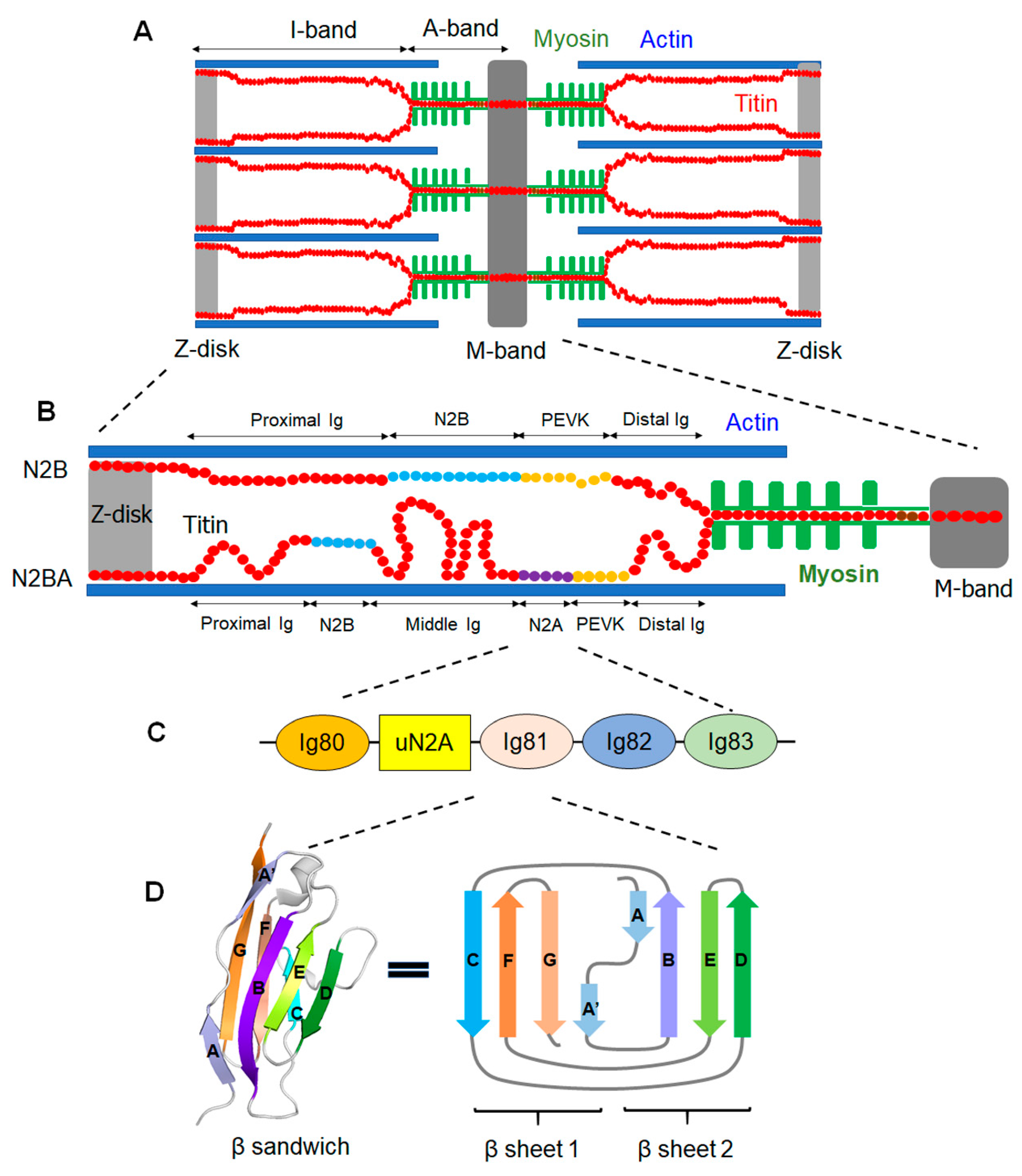
What is the protein called that keeps thick and thin filaments held together?
titin
What else does titin act as?
shock absorber
How is Titin a shock absorber?
Titin's like a spring and allows the sarcomere to contract and relax, absorbing tension (preventing muscle fiber damage)
Also fun fact, Titin is the ________?
largest known protein
ATP is made from ___ and ___?
ADP and Pi (i=inorganic phosphate group)
When breaking apart the ATP bonds; what is produced in the action?
energy, ADP, Pi
Contractile Cycle Step 1:
What is the state called?
Rigor State
Contractile Cycle Step 1:
What is the myosin head positioning in this step?
bent back
Contractile Cycle Step 1:
What is myosin bound to?
actin
Contractile Cycle Step 1:
Is the ATPase empty or full? (means is there ATP or ADP or Pi bound to it at that moment)
empty
Contractile Cycle Step 2:
What’s this step called?
Release
Contractile Cycle Step 2:
Is ATPase empty of full? If full what comes in?
full, ATP comes in
Contractile Cycle Step 2:
Once ATP is bound to myosin head, what does the head do?
releases actin
Contractile Cycle Step 3:
What is this step called?
Hydrolysis
Contractile Cycle Step 3:
What occurs to ATP?
turns into ADP + Pi
Contractile Cycle Step 4:
What’s this step called?
Extension
Contractile Cycle Step 4:
What occurs to the myosin head?
moves to extended position
Contractile Cycle Step 4:
How does it extend its head?
from the energy of ATP hydrolysis
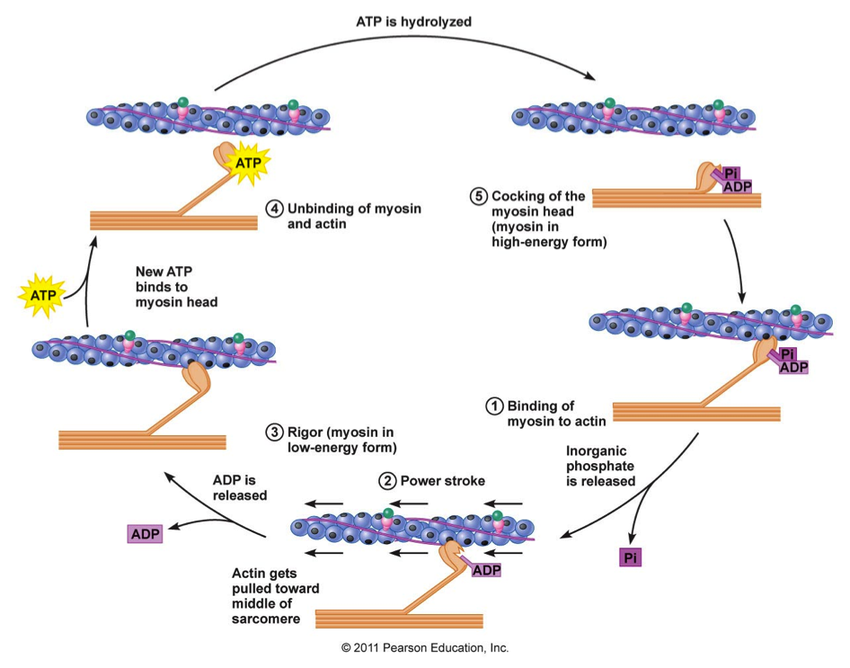
Contractile Cycle Step 5a:
What occurs here?
myosin head grabs (attatches) actin

Contractile Cycle Step 5b:
What occurs here to the ATPase?
Myosin head loses the phosphate group

Contractile Cycle Step 5c:
What happens to the neck of the myosin in this stage?
snaps back
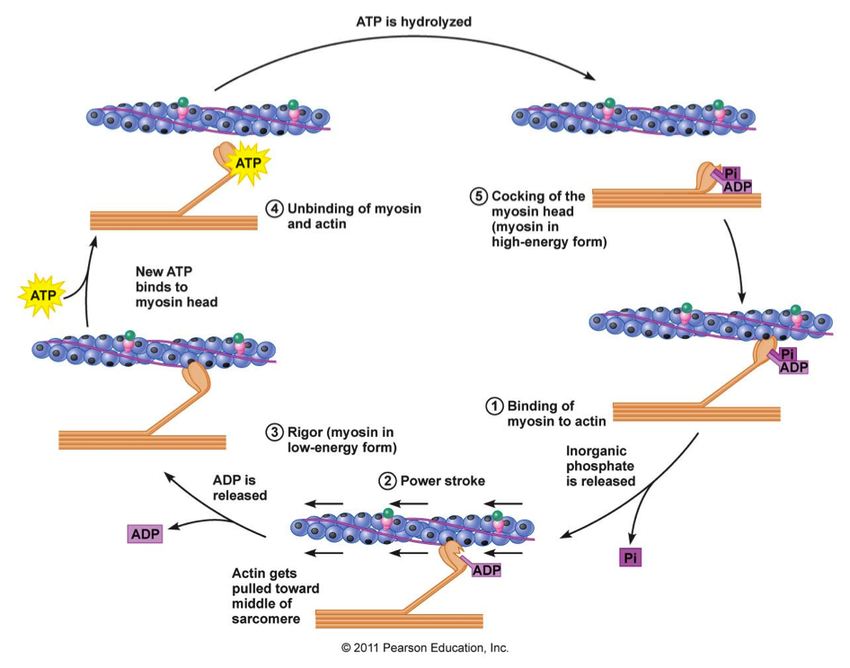
Contractile Cycle Step 5c:
Since myosin head lost P, did it lose energy?
yes
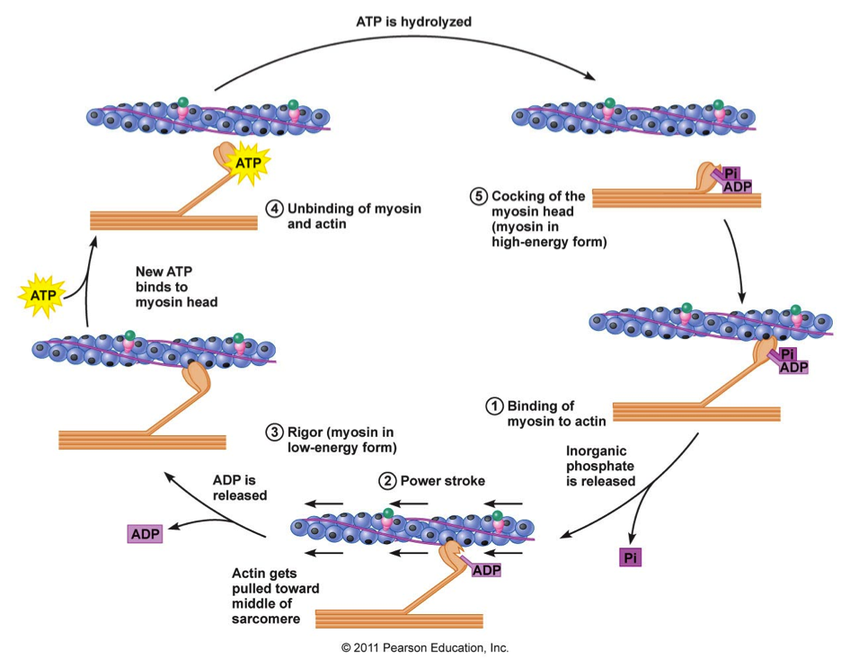
Contractile Cycle Step 5c:
Does the loss of energy trigger the head to go back (snap back)?
yes
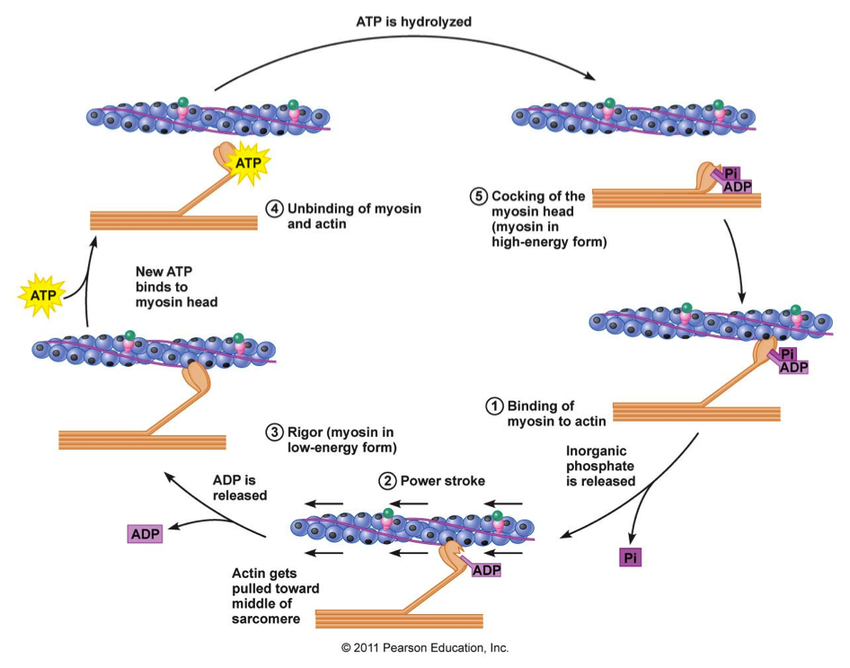
Contractile Cycle Step 5c:
What actually is occuring though when the myosin head snaps back?(2)
pulls the actin back, exerting force

Contractile Cycle Step 5d:
What occurs here?
Myosin head loses ADP (ATPase is now empty)
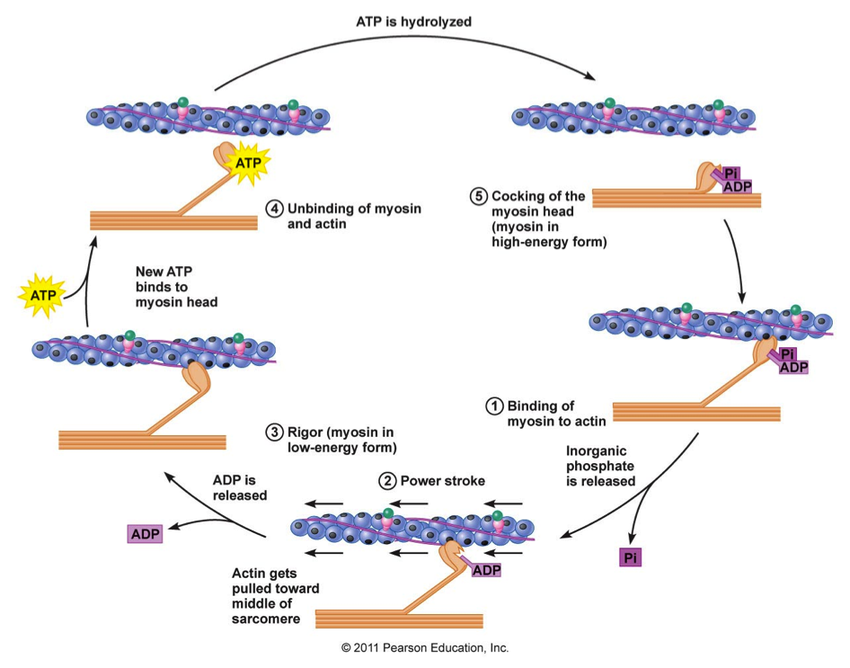
Contractile Cycle Step 5d:
What does the myosin head return to? (what state)
Rigor state
Essentially, when the Action Potential reaches the muscle → releasing Ca2+ to expose myosin binding spots on actin then what steps can occur?
steps 5a-5d
However, if tropomyosin is STILL blocking actin, can steps 5a-5d occur at all?
no
Start with tropomyosin block, then label steps that occur once block is released, end with block too . (total words: 10)
block → 5a → 5b → 5c → 5d → 1 → 2 → 3 → 4 → block
The steps that occur in that cycle = (what cycle)
contractile cycle
One singular contractile cycle = ?
single muscle twitch
The contractile cycle WILL occur as long as ATP is present, but will be blocked by ___ until moved by ____?
tropomyosin, action potential
In a single muscle twitch; the latent period is ___: (2)
period after Action potential in motor neuron is received by muscle, but before tension develops
Latent period is otherwise known as when…?
excitation contraction occurs
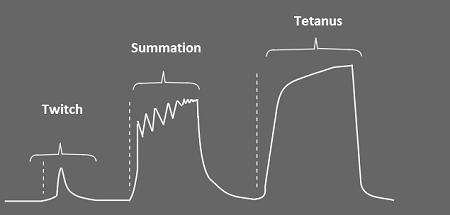
What’s occuring during muscle twitch summation?
twitches build upon eachother
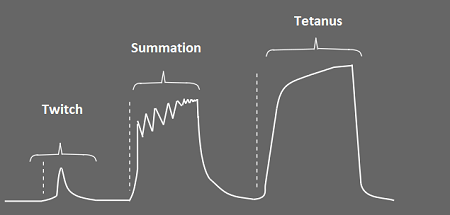
Once the muscle twitches build up to a steady force; what is this called?
tetanus
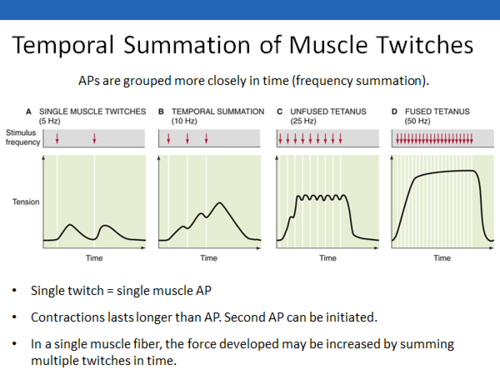
What are two types of tetanus?
unfused, fused
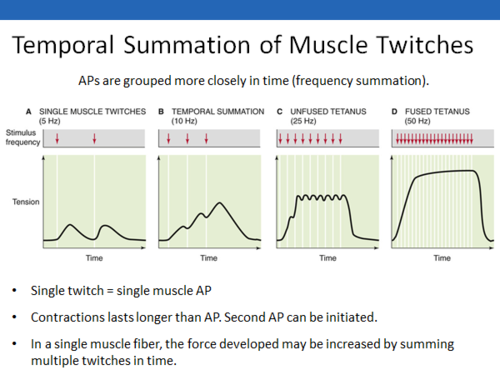
During a fused tetanus, Action Potentials are rapdily being fired which is ___ and ___
exhausting, dangerous
so, is unfused or fused tetanus more common?
unfused tetanus
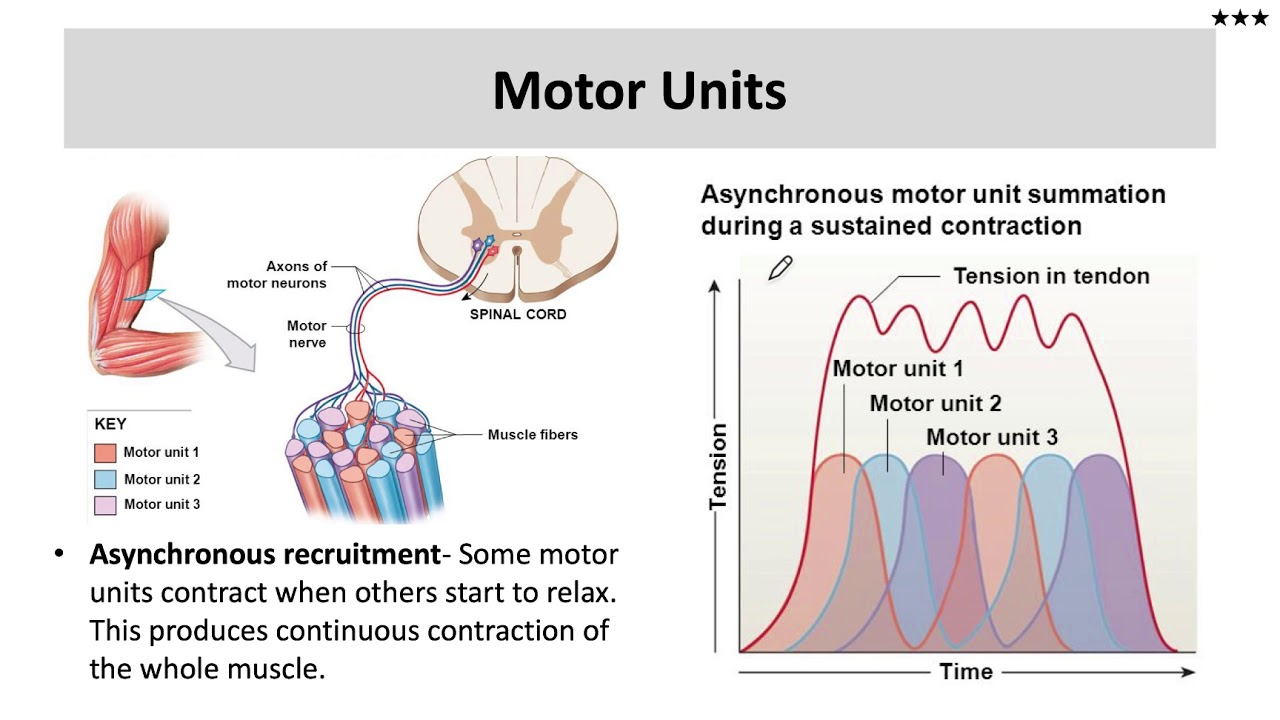
What’s Asynchronus Recruitment
mechanism where motor units are activated at different times to maintain force and prevent fatigue
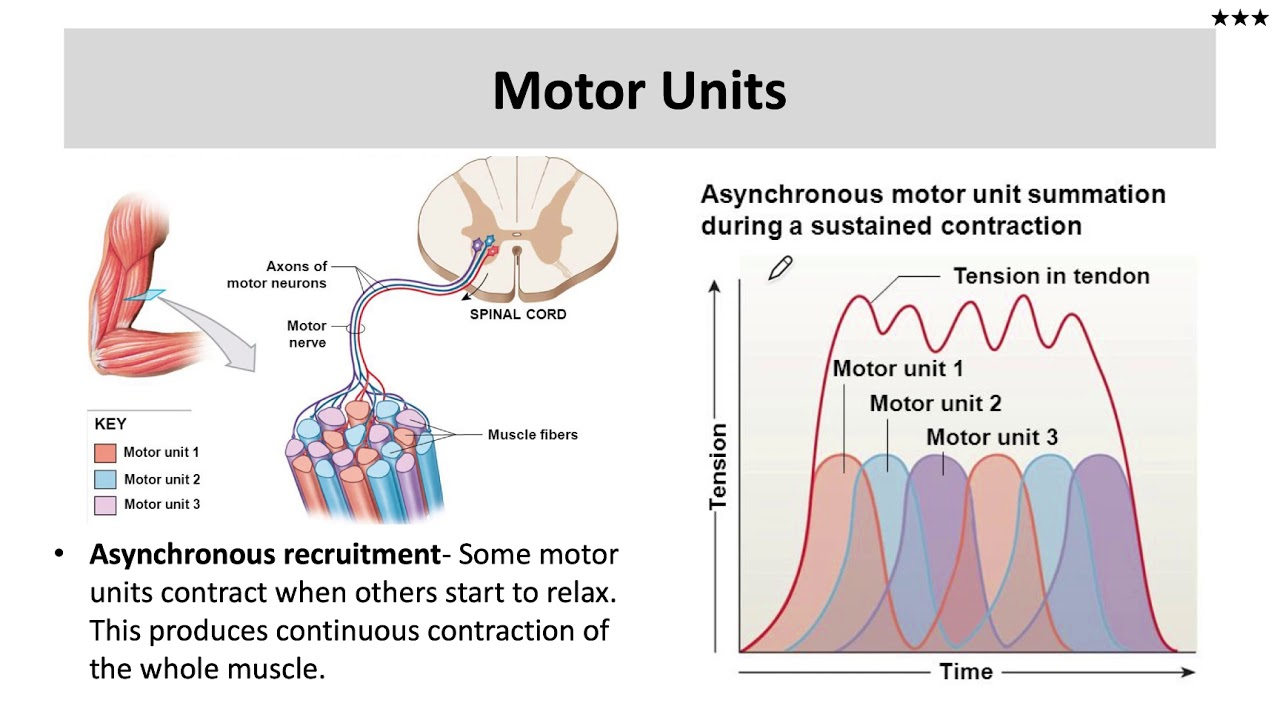
What does asynchronus recruitment enable? (2)
sustained muscle contraction (endurance)